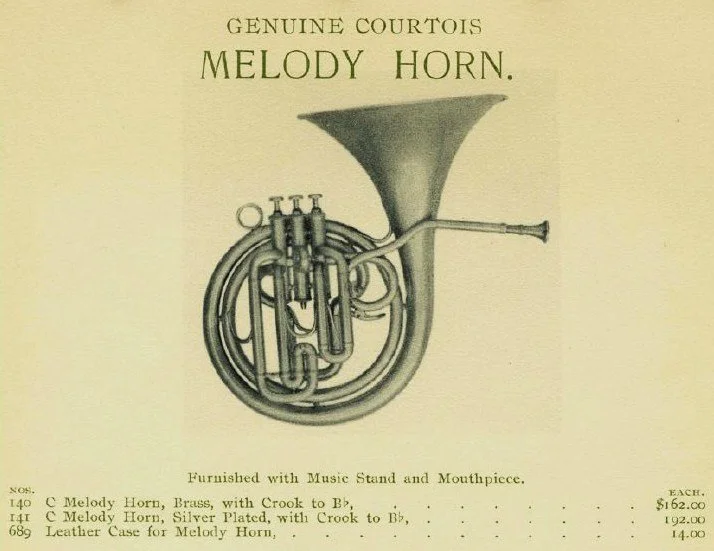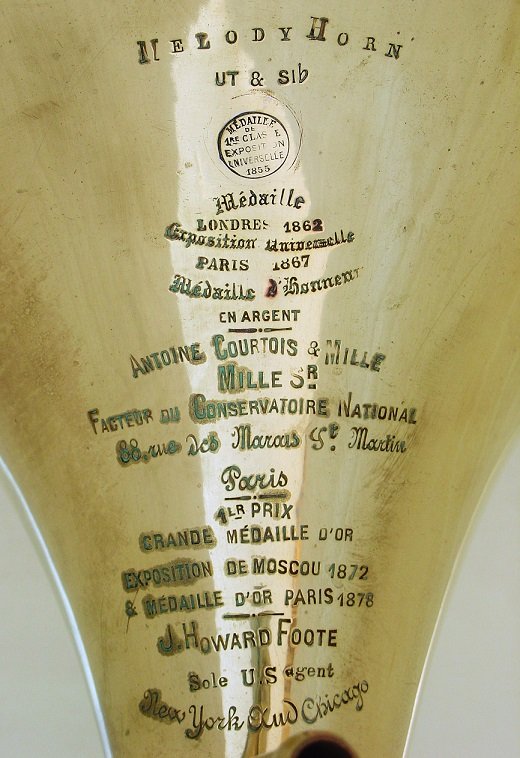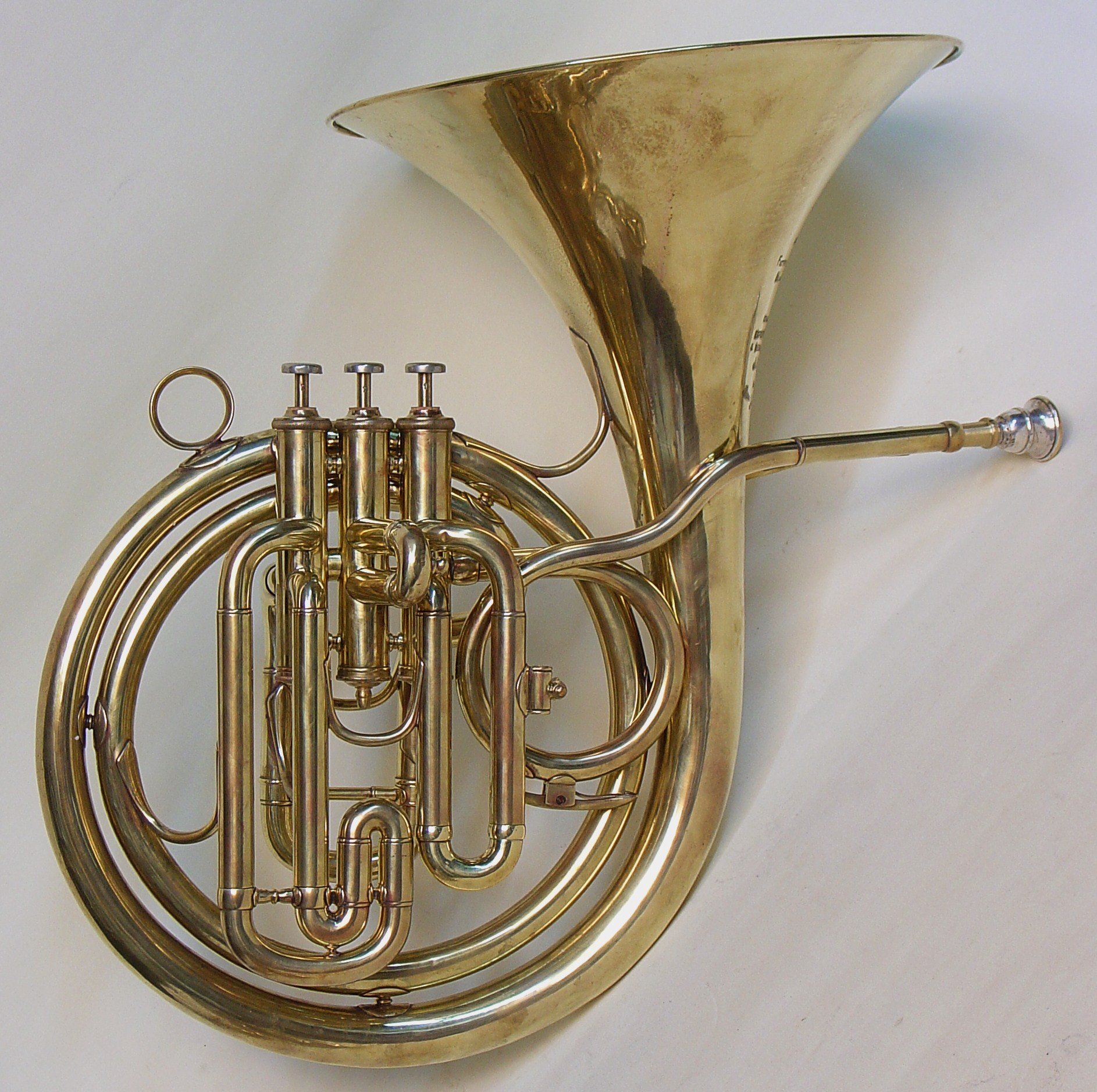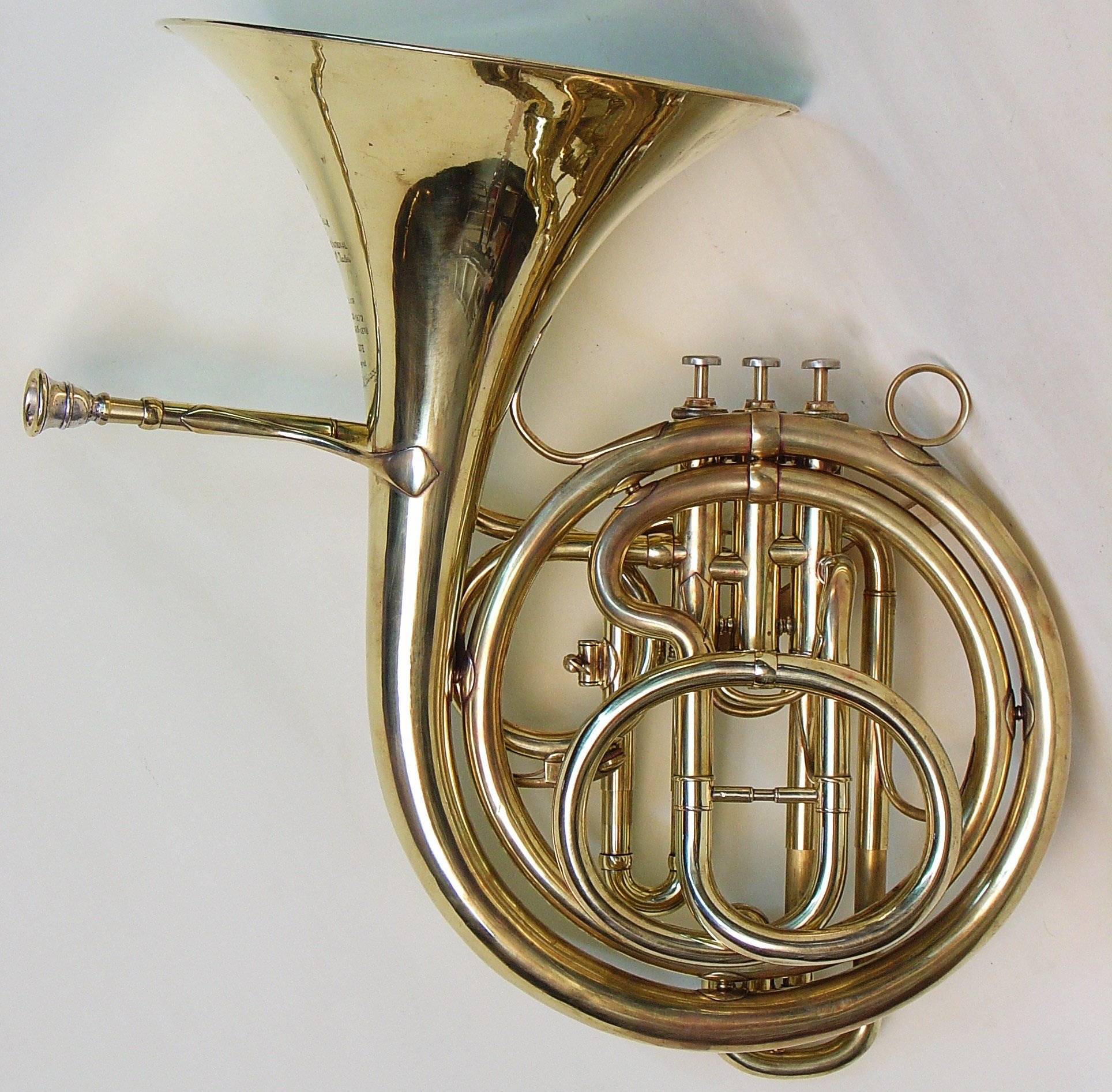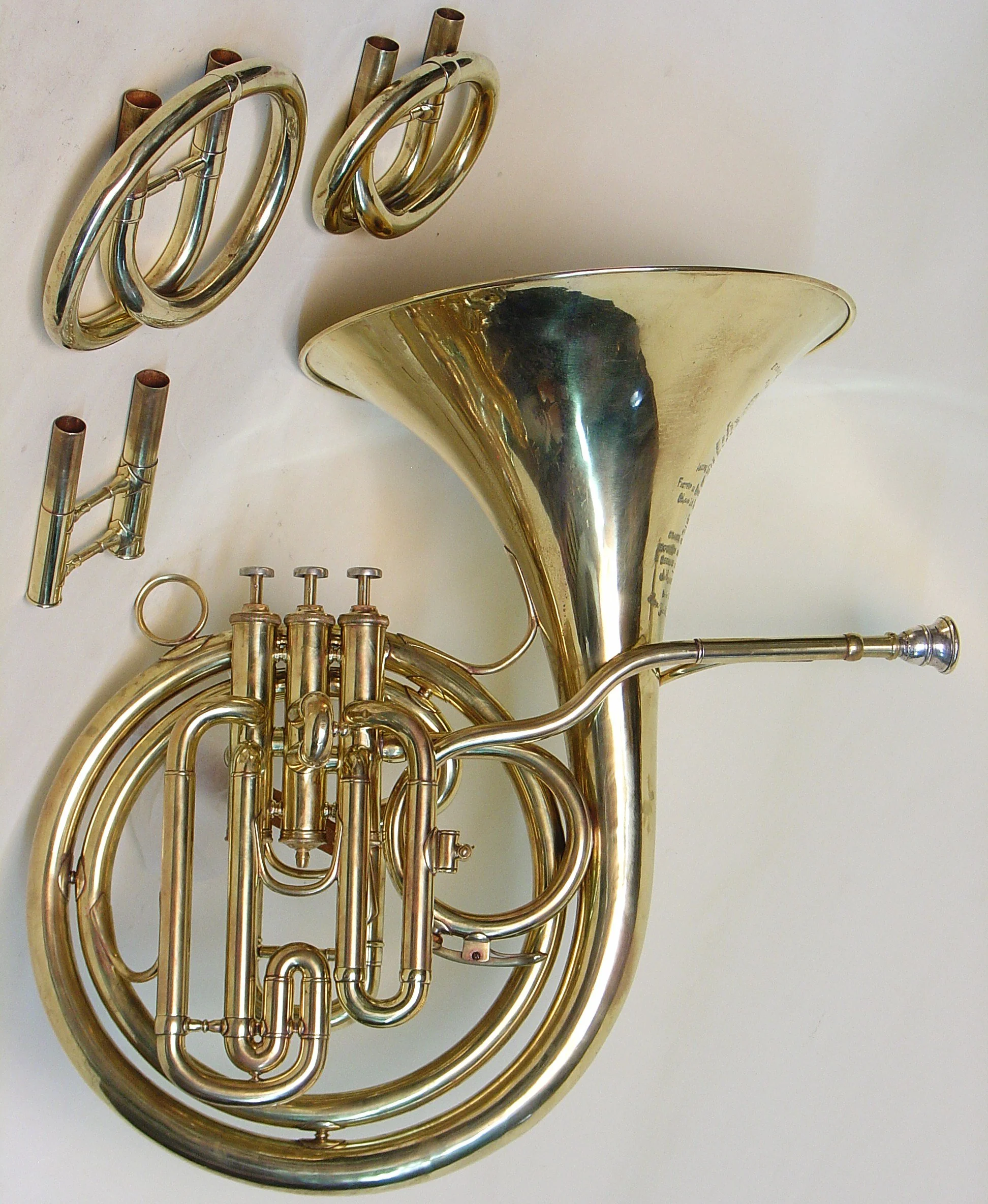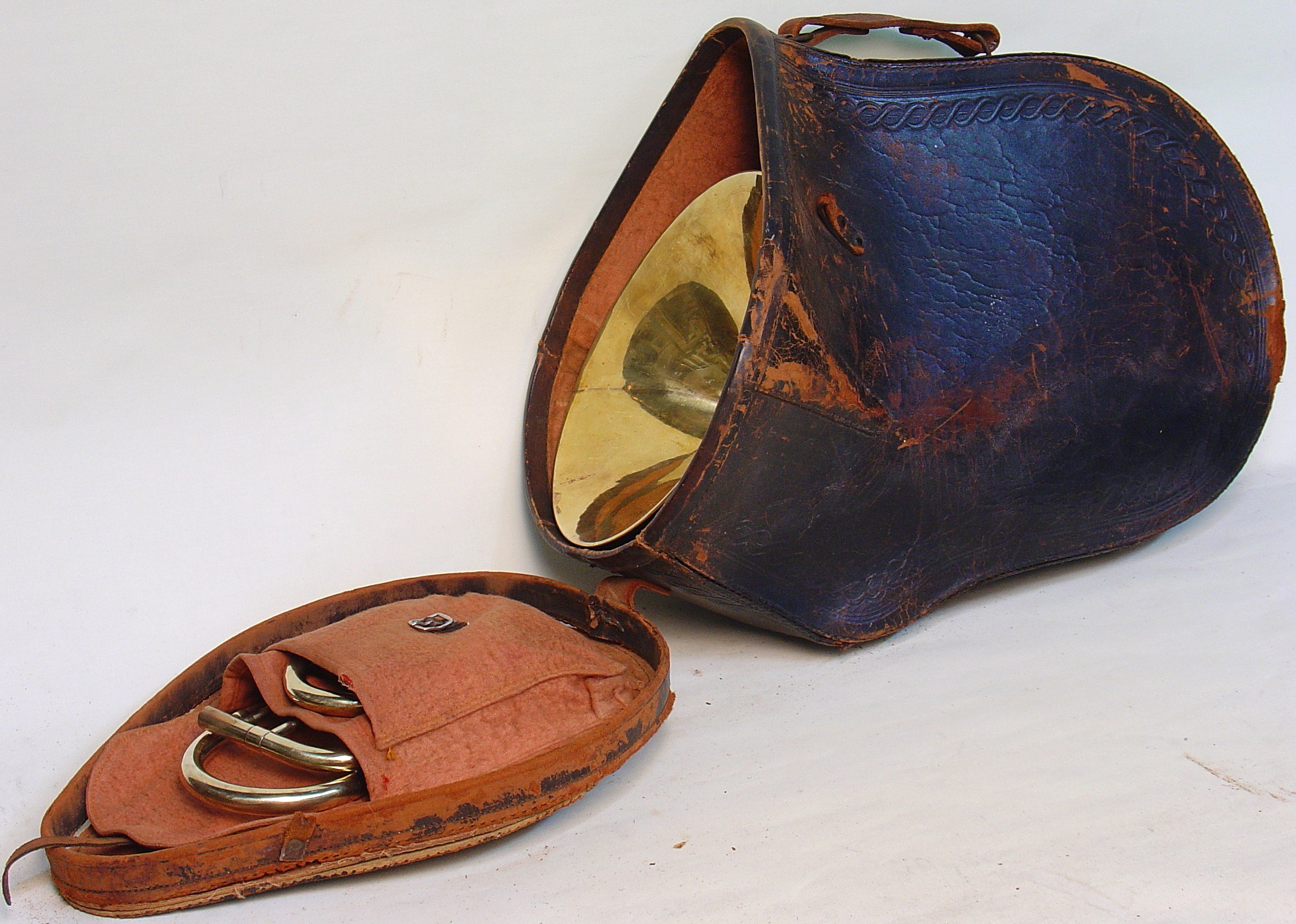"Melody Horn" by Antoine Courtois
Listing for Courtois Melody Horn in J. Howard Foote’s 1897 catalog with no mention of those in F and Eb.
Denis Antoine Courtois established his shop in Paris in 1844, specializing in cornets for artists from his early years. By the 1860s they were being used by Herman Koenig and Jean Baptiste Arban and by the 1870s Courtois cornets were the choice of Matthew Arbuckle and Jules Levy among many others. Also in the 1850s, Courtois made for Koenig a circular alto horn in F and called it the Koenig horn. These are much like later mellophones although intended more for solo use rather than middle voices and after beats.
“Melody Horn” stamped at the top using individual letter stamps. Courtois hadn’t committed to a single word stamps for this low production horn.
Courtois also made Koenig horns in C tenor. Circular instruments in this pitch later became generically known as ballad horns. Making somewhat of a specialty of circular shaped instruments including French horns, Courtois introduced, in about 1867, a family of "Antoniophones" from Eb soprano to Eb bass. In these, the large tubing forms two circles like a figure 8 with the bell curving upwards from the bottom. If that wasn't enough they went on to produce Melody Horns as pictured here, starting in the 1870s. This example was made after 1881 when J. Howard Foote became sole US importer for Courtois.
Melody Horn with slides in place for high pitch C.
Presumably, the intended use for this instrument is the same as ballad horns, vocal horns and parlor horns. These are different names used by various makers for very similar instruments, the common thread being that they are tenor horns in C and almost always have a crook for Bb, making them usable in bands as well.
Back side of Melody Horn with crooks in place for low pitch Bb.
Crooked in C, the player could play along with piano or organ music in the home parlor or church. Most of these are more tenor horn in character in contrast to the Courtois, with smaller diameter tubing through the mouthpipe and valve section and bell flare akin to the French horns, it is very much like a French horn in its sound. This sound quality is, of course also determined by mouthpiece choice and player. I don't have the original mouthpiece, but I was able to locate a small diameter French alto horn mouthpiece with a very deep cup on which somebody had already filed down the shank to fit a smaller receiver. I believe that this is similar to the original mouthpiece.
Showing the extension for low pitch C and crooks for high and low pitch Bb.
Most ballad horns are constructed with the bell downwards and are often confused with mellophones. I know of only two other Melody Horns, both in F/Eb. One in a private collection in Spain and the other is in the Edinburgh University Collection of Historical Musical Instruments. Missenharter, in New York, made ballad horns in the shape of Antoniophones and Mahillon and others made them with the bell up like this one. For even more information see Greg Monk's "The History of the Mellophone" where he shows additional photographs as well.
Melody Horn in its original leather case.
The leather case is also original. In the 1897 Courtois catalog published by J.Howard Foote, pictured above, the price with case was $176. This was quite an expensive horn and the buyer likely had to pay more for the low pitch slides. A ballad horn made by the Boston Musical Instrument Manufactory, a maker of equally high quality brass instruments, cost $75 at the time.
This instrument is very well preserved and retains all of its original alternate tuning slides. The shortest tuning slide puts it in high pitch C and the extension lengthens that to low (A=435Hz) pitch C. The two slides with circular crooks lower it to Bb high and low pitches. The extension in combination with the low pitch Bb slide achieves low pitch A, although I suspect that wasn't an intended choice.
The bore measures .462", the bell rim diameter is 10" and the height from bell curve to bell rim is 14 5/8".

